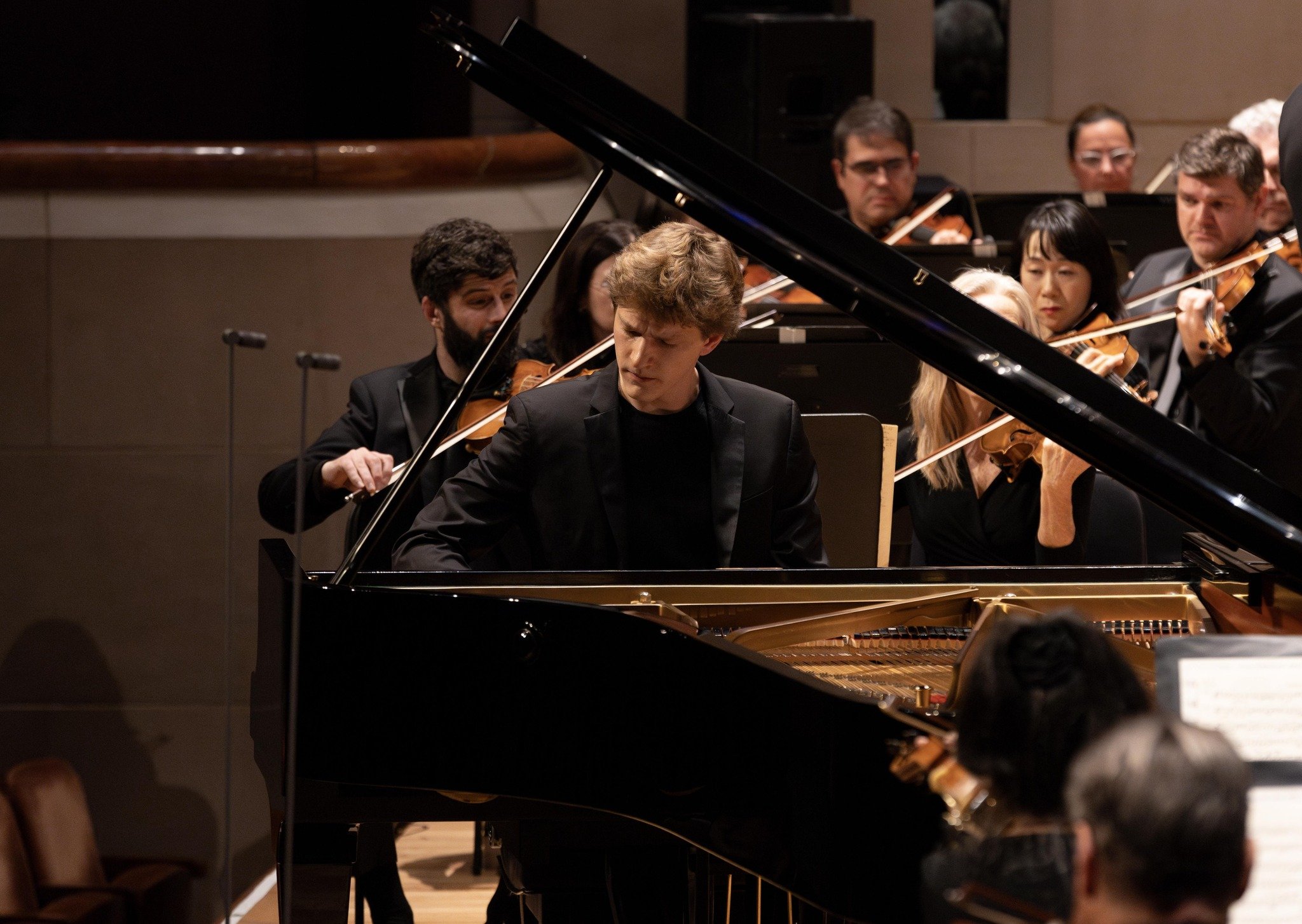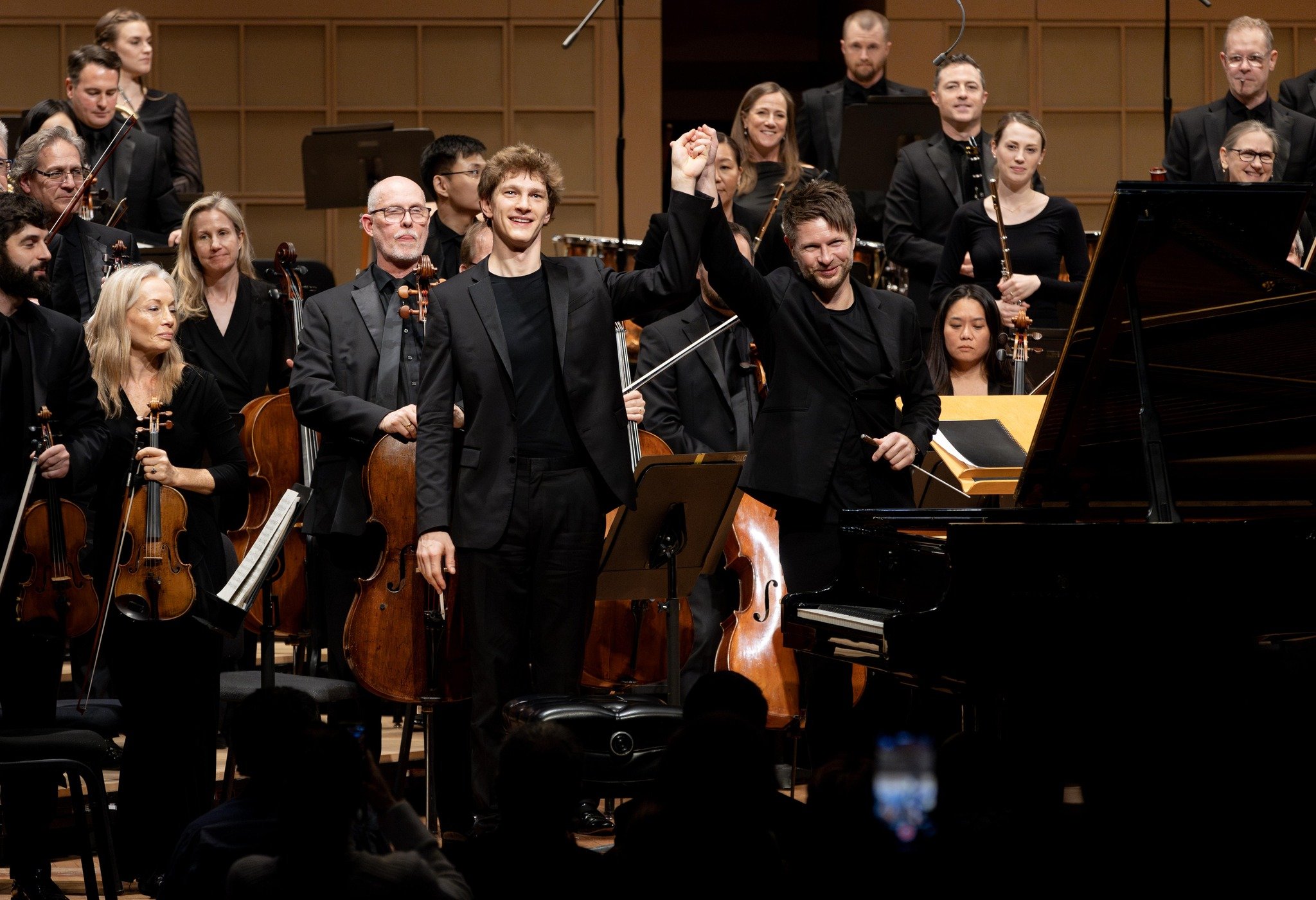‘Chopin & Shostakovich’ @ Dallas Symphony Orchestra
—Wayne Lee Gay
At first glance, Chopin and Shostakovich seem an odd pairing for a symphonic program.
But, featured together at this weekend’s concerts of the Dallas Symphony Orchestra, these two Slavic composers—separated by a century but both born under czarist rule—make for an engaging musical contrast under the baton of 41-year-old Polish-born conductor Krzysztof Urbanski.
Dispensing with the traditional brief curtain-raiser, Urbanski opens the program with Chopin's Piano Concerto No. 1, joined by Canadian pianist Jan Lisiecki. Not generally numbered among Chopin's greatest masterworks, the 40-minute Concerto, completed when the composer was twenty years old, shows flashes of emerging genius patched into a conventional early-romantic structure.
The Urbanski-Lisiecki collaboration brings the beauties of the score to the front, wisely spot-lighting two aspects of the work: the opportunity for dazzling pianistic virtuosity, and the emergence of gorgeous, silken melodies.
Not yet thirty, pianist Lisiecki already owns an international reputation as a Chopin interpreter, a skill evident as he captures and communicates the spirituality and psychology of the work's finest passages. In Lisiecki's able hands, the lyrical second theme of the first movement, and the main melody of the middle movement (a clear precursor of the lyricism of Chopin's Nocturnes), flow with emotional power that entirely avoids syrupy sentimentality.
At the same time, Lisiecki brings impeccable technique, clearly honed for the challenge of Chopin—with its double demand of power in combination with an underlying subtlety and delicacy. This mix of lightness and muscle is particularly impressive in Lisiecki's rendition of the dancing four-note motif of the Finale.
It was with good reason that Chopin thereafter rarely ventured into works for piano and orchestra: he was so piano-focused that he spent little imagination on orchestration in this Concerto. Conductor Urbanski handles the issue by playing up the orchestra with a full, high-romantic sound, providing the perfect frame for Lisiecki's rendition of the piano solo part.
After intermission, Urbanski tackles Shostakovich's Symphony No. 10 (like the Chopin Concerto No. 1, composed in E minor—but worlds distant in effect and mood). In its monumental scope, the work continues in the epic vein of Shostakovich's Fifth and Seventh Symphonies. And, odd though it may seem to link Shostakovich's quintessential 20th-century Soviet voice with Mahler’s central European romanticism, Shostakovich's Tenth is a direct descendant of Mahler's equally broad-ranging symphonic essays.
One can hardly help inferring in the Tenth Symphony the circumstances of its creation. Shostakovich had drawn the ire and praise of Stalin over a period of decades. He composed Symphony No. 10, very possibly with a sense of relief, during the summer following Stalin's death in 1953. Whether one hears the work as a critique of Stalin, as a reflection of the mental agonies the composer endured under that regime—or as neither—the work stands now (nearly three-quarters of a century later) as a powerfully emotional essay in extended symphonic form.
In the opening passage of the Shostakovich, conductor Urbanski—who chooses a broad romantic sound for the orchestra in the Chopin—here compresses the sound with powerful results. Perfect pacing and unfailing energy carry the work across the rages of the Allegro (claimed by some sources to be a depiction of Stalin's brutality), through the gentler Allegretto, to the Finale, a heady mix of joy, relief, and anger flawlessly executed by the Dallas Symphony under Urbanski.
WHEN: March 7, 8, and 10, 2024
WHERE: Morton H. Meyerson Symphony Center, Dallas Arts District
WEB: dallassymphony.org

